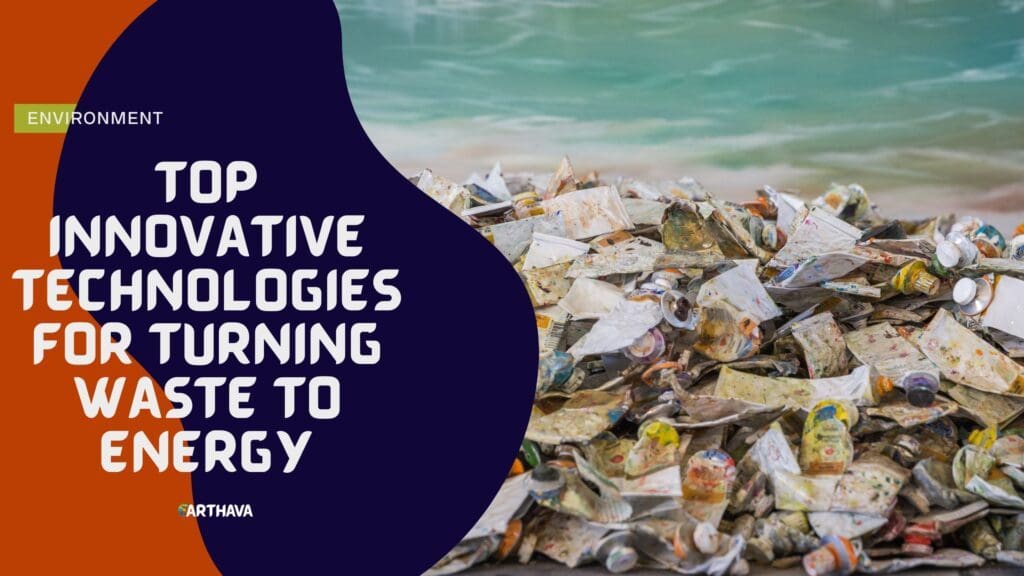The world has a growing waste problem, but there’s an increasingly prominent movement where people want to turn waste into power. That makes sense because, in developing countries at least, people generate a lot of garbage and depend on electricity to go about their lives. So, any efforts to convert waste into energy seem ideal.

Let’s examine several ways countries are making power from waste, as well as some possible pitfalls.
Sweden Emerges as a Worldwide Leader in Using Garbage for Energy
Sweden is one country that’s showing other nations what to do to make energy from garbage effectively. It also helps that Swedes are well-accustomed to recycling, and a little more than half the household trash gets recycled there. The rest goes to one of Sweden’s 33 waste-to-energy plants. After processing, the garbage provides either heat or electricity for approximately two million households there.
In the United States, various state legislators are working hard to reduce climate change and come up with plans to make cities more eco-friendly. For example, plans exist to make Boston a zero-waste city. If those leaders want some guidance for their initiatives, they could look to Sweden as a start.
Used Cooking Oil to Power Hong Kong’s Delivery Trucks
Some waste-to-energy efforts use a very specific kind of garbage. One example is a program where oil company Shell is working with a catering company in Hong Kong to make biodiesel from cooking oil as fuel for delivery trucks. The program involves taking cooking oil from two food production plants and using it for a fleet of more than 100 vehicles.
This approach shows that many of the ways to use waste for energy are more creative than many people realize.
Increasing Biodiversity Through an Artificial Ski Slope
One of the frequent criticisms of waste-to-energy plants is that they could harm the planet. It’s especially likely that this could happen if people behind the projects construct the facilities haphazardly without thinking about the long-term effects.
In Thailand, for example, the country’s authorities are moving quickly to build waste-to-energy projects. Critics point out that it’s necessary to keep the environment in mind to avoid hurting it.
One project that’s attempting to contribute to the environment with a waste-to-energy plant is Amager Bakke in Copenhagen. Its design features an artificial ski slope and a surrounding nature park. The roof of the plant has an assortment of plants and flowers meant to increase biodiversity by attracting bees and other creatures of the natural world.
Turning Plastic Into Oil
Like the earlier example of using food oil for fuel, there are other attempts to use certain materials for energy. Vidya Amarnath is an entrepreneur who has a startup that makes oil from plastic waste. She says her process produces 500 liters of oil for every ton of discarded plastic.
Issues exist with some methods of burning plastic waste because they contribute high levels of carbon dioxide to the atmosphere. However, Amarnath’s technique uses an option called pyrolysis. It depends on lower temperatures and releases less carbon dioxide. As people continue to look for worthwhile ways to give new life to plastic garbage, it’s essential that they understand the pros and cons of each option.
Relying on Eggshells for Energy Storage
Many researchers turn their attention to agricultural waste for energy generation. There are also fascinating attempts to power a lithium-ion capacitor with chicken eggshells. A component of the shells called calcium carbonate gives them excellent lithium storage capabilities, scientists found. More specifically, the eggshells maintained more than 92 percent capacity retention across 1000 charge cycles.
This is the first use of eggshells inside an electrode. It’s already common for various industries to use eggs in their operations, and this example suggests how some of them could get further use of the eggshells instead of throwing them away. This project is still in the early stages, so it may have some unforeseen downsides. For now, though, it offers a thought-provoking advantage of waste.
Forward-Thinking Ways to Reduce Waste
The examples mentioned here demonstrate the versatility of attempts to get energy from waste. It’s promising to think about what the future might hold.


